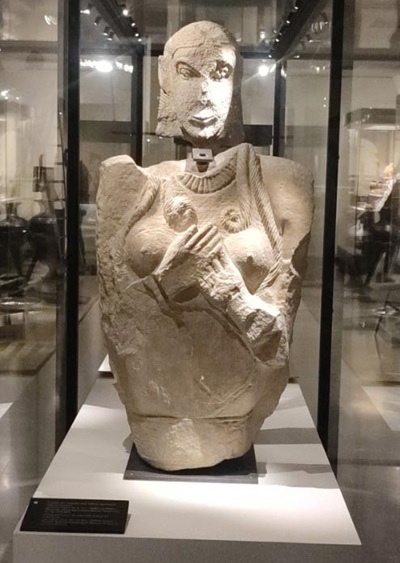
Opening of the exhibition “Stone Routes – Stories of Stone: Jewish Inscriptions in Greece” by the Minister of Culture and Sports Lina Mendoni at the Jewish Museum of Greece and the Epigraphic Museum.
The temporary exhibition “Stone Routes – Stories from Stone: Jewish Inscriptions in Greece”, which is being held simultaneously at the Jewish Museum of Greece and the Epigraphic Museum, was inaugurated by Minister of Culture and Sports Lina Mendoni, who presented the Museum’s President Makis Matsas with the Certificate of Recognition, which the museum has received from the Ministry of Culture and Education.
The exhibition is based on the 2019 Athens Academy Award-winning scientific publication entitled Corpus Inscriptionum Judaicarum Graeciae (CIJG)-Constitution of Jewish and Hebrew Inscriptions from Continental and Island Greece, which documents the presence of Jews in Greece from the end of the 4th century BC to the end of the 4th century AD. It documents the presence of Jews in Greece since the end of the 4th century BC, making the Jewish element in Greece one of the oldest recorded Jewish settlements in Europe.

The greatest significance of the exhibition lies, however, in the fact that both in its thematic and methodological approach it demonstrates historically that diversity not only does not hinder coexistence, but on the contrary constitutes an enriching factor that broadens the foundations, strengthens the adaptability of society and ultimately increases its cohesion and resilience. The exhibition therefore has an additional educational function, promoting tolerance against stereotypes of all kinds and against hate speech and exclusionary rhetoric. In the light of the tragic events currently taking place in Ukraine, and indeed in the context of a narrative of ‘de-Nazification’ and ‘decolonisation’, the sober and unifying message of the Report becomes even more relevant”.
JMG Director Jeanette Battinou and Epigraphic Museum Director Athanasios Themos referred to the content of the modular exhibition. The exhibits at the Epigraphic Museum are presented in thematic sections, covering all aspects of the social, religious, political and cultural life of the Jewish communities of late antiquity. The original “reading” that this dual presentation proposes to the visitor lies in the exploration of the early settlement of the Jews in Greece, not as an isolated historical event, but as an integral part of a wider historical, geographical and chronological context, emphasizing and highlighting, in this way, the multiculturalism of Greece.
The art exhibition entitled “The Art of Memory and Remembrance”, curated by Victor Cohen, is presented at the Jewish Museum of Greece, proposing a different reading of the inscriptions through the contemporary perspective of ten artists from the world of fine and applied arts. Participants include the font designer Yannis Karlopoulos, the industrial designer Andreas Varotsos, the artists Artemis Alkalai, Xenis Sahinis and Katerina Zafeiropoulou, the visual duo Kalos & Klio and the photographers Aris Georgiou and Marilia Fotopoulou. The exhibition concludes with a painting by the artist Maurice Ganis (1973-2019) – to whose memory the exhibition is dedicated.
The exhibition is realized with the cooperation and support of the Ministry of Culture and Sports and has been funded by the Hellenic-German Fund for the Future, the Ministry of Foreign Affairs of the Federal Republic of Germany. The Ambassador of the Federal Republic of Germany Ernst Reichel was present at the opening ceremony.
The exhibition is organized with the cooperation and support of the Ministry of Culture and Sports and has been funded by the Hellenic-German Fund for the Future, the Ministry of Foreign Affairs of the Federal Republic of Germany. The Ambassador of the Federal Republic of Germany Ernst Reichel was present at the opening ceremony.







Leave A Comment